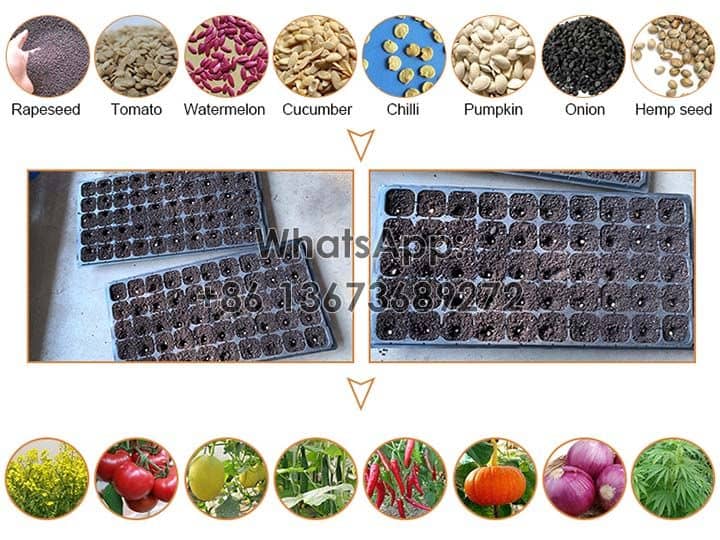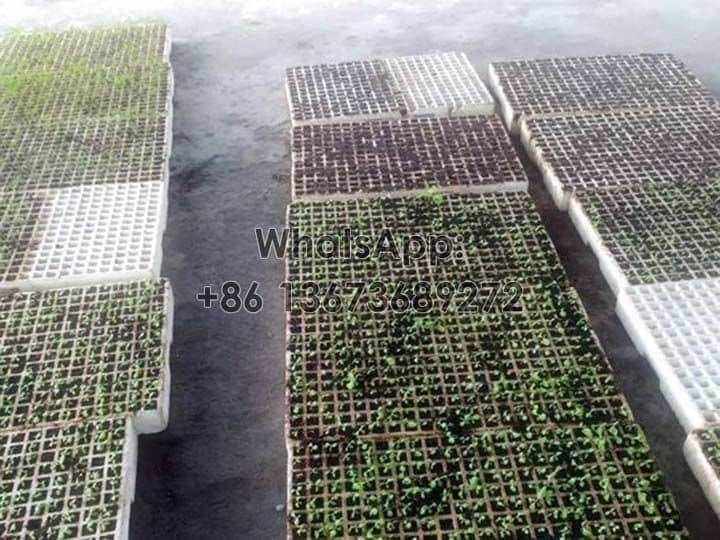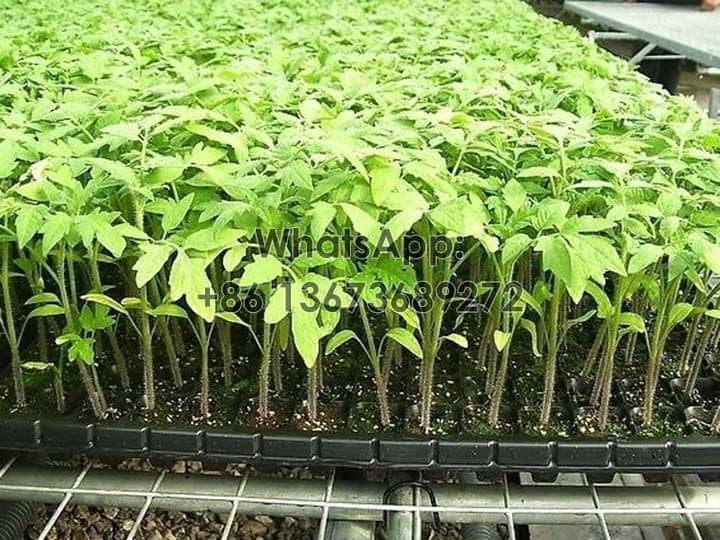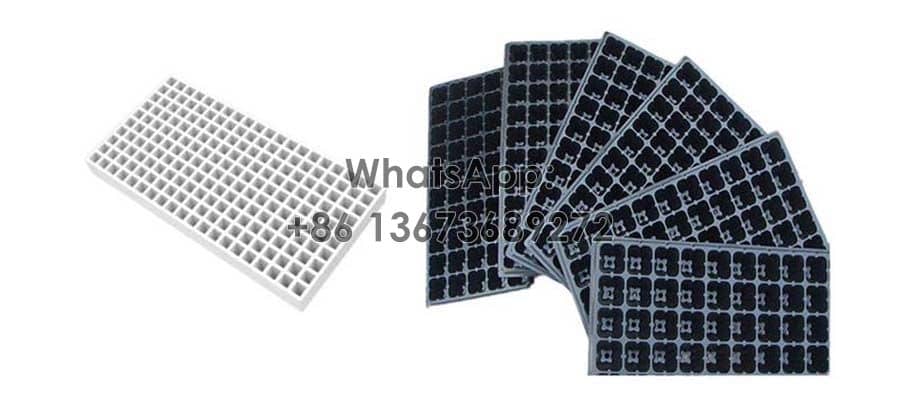Seedling trays are containers used to cultivate different kinds of vegetable and flower seeds. There is a hole on the bottom of it, and the shapes of the holes are mainly square and round. The square holes generally contain about 30% more matrix than the round holes. With relatively uniform water distribution and a fully developed seedling root system, seedling trays play an indispensable role in the greenhouse seeds plating industries.

What is the Difference of Black Trays and White Trays?
The color of the seedling trays can be divided into white and black.
White polystyrene foam trays have better reflectivity and are mostly used for early summer and autumn, which is good for reflecting light and reducing the accumulation of heat in the roots of seedlings.

The black trays have good light absorption and are conducive to the development of seedling roots. They are mostly used in winter and spring.

What is Seedling Tray Nursery?
Plastic seedling tray adopts trays with different holes as containers, through a series of automated operations of the nursery seedling machine, and then farmers place the seedlings in a greenhouse for regulation and cultivation. The use of mechanized precision seeding mode is increasingly favored by vegetable and flower producers, and it has particular significance for large-scale vegetable production.
Regardless of whether it is flowers or vegetables, plug tray seedlings are the most fundamental change in modern horticulture, which guarantees fast and mass production. That’s why the nursery tray has become an important tool in the production of seedlings.
Size of Seedling Trays for Sale
The size of the nursery tray is various, and it can be customized according to your needs. Normally, its size is 4*8, 5*10, 6*12, 7*14, etc.
| Model | Material | Thickness | Quantity of holes | Upper size | Bottom size | Each weight | Specification(L*W*H) |
| DT-32 cell | PVC | 0.6mm | 4*8 | 60*60mm | 30*30mm | 125g | 546*287*55mm |
| DT-50 cell | PVC | 0.6mm | 5*10 | 50*50mm | 25*25mm | 125g | 546*287*55mm |
| DT-72 cell | PVC | 0.6mm | 6*12 | 40*40mm | 20*20mm | 125g | 546*287*55mm |
Development of Commercial Seedling Trays
Nursery tray seedling technology originated in the United States. After more than 20 years of development, it has become mature and perfect and has been popularized throughout the world.
At present, it has formed a new industry in developed countries, and its emergence has driven technological progress in related industries such as greenhouse manufacturing, tray manufacturing, and matrix processing. Since the introduction of nursery seedling equipment in the mid-1980s and it has gradually spread throughout China, especially in recent years, the development of nursery trays is rapidly growing.
Advantages of Plastic Seedling Trays
1. Save the number of seeds, uniform seed distribution, and high seeding rate.
2. The root system of seedlings in the seedling tray can be protected, which facilitates subsequent transplanting and increases the probability of seedling survival.
3. It is good for seedling centralized management, improving working efficiency, and saving manpower.
4. There is only one seed in each tray hole, so each seed is relatively independent, which can reduce the spread of some diseases, and the nutrition competition between seedlings.
5. Due to unified seeding and management, the growth speed of seedlings is consistent, which is conducive to large-scale production.
How to Choose the Soil Matrix in the Seedling Trays?
1. Ideal moisture capacity, good drainage capacity and air capacity, easy to re-wet.
2. Good porosity and uniform void distribution, stable structure, and less dust.
3. Appropriate PH value: 5.5-6.5.
4. Contains appropriate nutrients to ensure the absorption of seedlings.
5. Low salinity level. EC should be less than 0.7.
6. The size of matrix particles is uniform.
7. No pests and weeds.
The role of vermiculite is to increase the water retention capacity of the matrix rather than the porosity. To increase the drainage and permeability of the peat matrix, you should choose to add perlite instead of vermiculite. Conversely, if you want to increase water holding capacity, you can add a small amount of vermiculite.

What Should Be Noted When Adding Matrix?
1. The matrix should be fully wet before filling, generally, 60% is appropriate. Hold the substrate with your hands and squeeze it out without moisture. If you release your hand, it will form a mass. If you touch it gently, the matrix will spread out. It can not be too dry because the matrix will collapse after watering in the future, resulting in poor ventilation and root system development.
2. The filling degree of each hole must be uniform, otherwise, the holes with less base mass will dry faster, which will cause uneven water management.
3. The matrix in each hole should not be too full, otherwise, it will affect its breathability and drying speed of it. On the other hand, if it is pressed too tightly, the seeds will rebound, resulting in different germination depths.
4. The depth of the holes should be the same.

